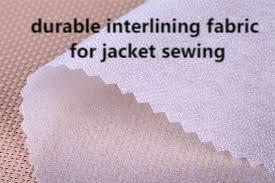In the ever-evolving textile world, Interlining has become an essential material for shaping, reinforcing, and enhancing the performance of fabrics. At interlining-factory, developing advanced interlining solutions reflects a blend of engineering expertise and creativity, aimed at supporting diverse needs in both fashion and industrial applications. As markets demand better quality and sustainability, the role of this material continues to expand, offering new possibilities for design and functionality.
Hidden Support for Elegant Structures
Beneath the surface of stylish garments lies a hidden layer that provides shape and crispness. This material ensures collars stand upright, cuffs remain sharp, and jackets hold their tailored silhouette. Without this unseen reinforcement, many garments would lack the polished appearance consumers expect, underlining how significant this component is in garment construction.
Quality as a Foundation
Quality control is crucial in the production of textile materials. Each batch undergoes testing for consistency in thickness, adhesion, flexibility, and resistance to repeated washing or dry cleaning. Manufacturers rely on predictable results to produce clothing that meets market standards, ensuring that designers and consumers can trust the garments they create and purchase.
Environmental Responsibility in Production
Sustainability is no longer optional in the textile sector. Many producers now focus on reducing water and energy consumption, minimizing chemical use, and exploring recycled or biodegradable materials. Eco-friendly practices help protect natural resources and appeal to consumers who prioritize ethical fashion choices. This shift toward sustainable production reflects broader trends in global manufacturing.
Versatile Applications Across Industries
Although crucial in fashion, this material is equally important in various other fields. In automotive interiors, it contributes to comfort and structure. In home furnishings, it lends drapes and upholstery their elegant drape and body. Specialized types are engineered to perform well in specific applications, supporting durability, flexibility, and aesthetics in diverse products.
Looking Ahead with Innovative Materials
Research and development are key drivers in the future of textiles. New formulations are being created to adjust to environmental changes, enhance comfort, or integrate smart technology. Future concepts may involve materials that react to heat or moisture, adding value far beyond traditional uses. These advances promise to revolutionize not only garment construction but also the broader textile industry.
From ensuring the elegance of high-fashion garments to providing structure in technical products, this material’s importance cannot be overstated. As innovation continues, it will remain central to creating fabrics that are as functional as they are beautiful. For those eager to learn more about emerging developments in this field, visit https://www.interlining-factory.com/news/what-is-interlining-types-applications-and-more.html .



